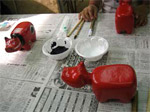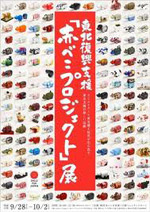Common Core Standards addressed
Research to Build and Present Knowledge
CC.8.6.11-12.F.: Conduct short as well as more sustained research projects to answer a question (including a self-generated question) or solve a problem; narrow or broaden the inquiry when appropriate; synthesize multiple sources on the subject, demonstrating understanding of the subject under investigation.
CC.8.6.11-12.G.: Gather relevant information from multiple authoritative print and digital sources, using advanced searches effectively; assess the strengths and limitations of each source in terms of the specific task, purpose, and audience; integrate information into the text selectively to maintain the flow of ideas
Production and Distribution of Writing
CC.8.6.11-12.D.: Develop and strengthen writing as needed by planning, revising, editing, rewriting, or trying a new approach, focusing on addressing what is most significant for a specific purpose and audience.
Instructional Objectives:
- Students will generate questions about what has happened to the environment and the people of Fukushima as a result of the tsunami and flooding of the nuclear power plant.
- Students will use primary source video testimony and interviews to gather information from many perspectives.
- Students will share information orally and take notes on ideas expressed by others.
- Students will integrate information on Fukushima into an opinion paper.
Assessment
Pre-Assessment
List students’ background knowledge and questions about the tsunami and nuclear plant meltdown in Fukushima as it comes out in discussion after viewing the Fukushima Picture File on the SmartBoard.
Formative Assessment
Each student will chose a role as one of the experts on or stakeholders in the Fukushima nuclear radiation disaster. Each will view primary source video, take notes on the factual information the person has to contribute and the values and interests that the person represents. Then the students will participate in a role-play symposium. Teacher may use a rubric appropriate to the class to evaluate participation.
Summative Assessment
Reaction essay after participating on role-play symposium. An art extension could be added to this assessment. Students could decorate an akabeko to represent the things they think are important in responding to and learning from the events in Fukushima.
Lesson 1 Introduction: Where did this akabeko come from?

Show real akabeko, or a picture. Explain its significance as a folk toy, charm against illness (originally smallpox), and legendary origin. All akabeko come from one spot in the world. That’s Aizu-Wakamatsu city in Fukushima prefecture, Japan. It has become a symbol of hope for Northeast Japan (Tohoku).
On the SmartBoard present images from the Fukushima Picture File (attached). They have been scanned from a brochure the prefectural government published in 1975.
 The following are explanations to go with each picture in the Fukushima Picture File:
The following are explanations to go with each picture in the Fukushima Picture File:
1. Mt. Bandai — Volcanic eruption in 1888 formed many lakes. This is Goshikinuma – the “lake of five colors.” The eruption dammed a river and formed vast Lake Inawashiro. You can still see the roofs of villages under it’s clear water.
2. Azuma-kofuji Ais an active volcano shaped like a little Mt. Fuji
3. There are several scenic highways (Can you guess when these pictures were taken?)
4. Mountain climbing and sightseeing area.
5. Natural beauty of old Japan makes this a domestic tourism area.
6. Fukushima has local sights. The gardens and old thatched roof houses are carefully preserved. The carvings of the goddess of mercy survive from the middle ages. Castles destroyed in feudal wars have been reconstructed.
7. Ski resorts.
8. Hot spring spas and traditional inns, ryokan, cater to Japanese and Korean vacationers.
9. Summer festivals are different in each town. People who’ve moved to bigger cities come back for the fun in the summer.
10. The local festivals come from old, old tradition and engage everybody — hometown folks and sightseers, too.
11-12. Tourists buy souvenirs. Many towns have a local folkcraft, fine craft, or food that can only be made and purchased in that local area. Japanese law protects and encourages local small industry that way. Here are some of the souvenirs you might bring back if you went shopping in Fukushima. The climate is like Pennsylvania, so apples and peaches grow well there – Asian pears and persimmons, too. Fukushima produces rice almost everywhere. Tariffs on foreign rice, zoning, and tax law have deliberately kept small farms producing food close to cities.
13. The pictures you’ve been looking at come from a brochure the prefectural government published in 1975 to promote the outstanding features of Fukushima. Counterclockwise from the upper right: Wildflowers. Daruma dolls. Bon dancing festival. Chrysathemun dolls exhibit. Hot spring. Tengu festival. Castle gate in winter. New nuclear electric power plant, on-line for just five years.
Have a two students record:
- Facts and observations their peers contribute to discussion of Fukushima
- Questions they generate. Photograph the lists and distribute to the class at the next lesson.
Lesson 2: Real Voices from Fukushima
This lesson may continue over two class sessions. Review the listed questions. Assign each student two videos to view from the sources below:
- Junko Kajino and Ed M. Koziarski, documentary filmmakers. “Uncanny Terrain.” Video blog posts. Uncanny Terrain. Ed. Web. 31 May 2013.
- “The Medical and Ecological Consequences of the Fukushima Nuclear Accident, Day 1.” The Medical and Ecological Consequences of the Fukushima Nuclear Accident, Day
- 1. The New York Academy of Medicine, New York, New York. The Helen Caldicott Foundation/Physicians for Social Responsibility, 11 Mar. 2013. Web. 30 May 2013.
- “The Medical and Ecological Consequences of the Fukushima Nuclear Accident, Day 2.” The New York Academy of Medicine, New York, New York. The Helen Caldicott Foundation/Physicians for Social Responsibility, 12 Mar. 2013. Web. 30 May 2013.
- Dr. Shigeki Imamoto, DVM in Japan recounts his view of what really happened to animals within the 20km no go zone
Activity
Students each watch their videos several times and take notes on the second or third viewing. Then they should add more background observations and questions to the original list. Gather the class and have them share jigsaw style. Provide the class with a list of the people on all the videos, on which they can take some notes. They will each explain who they listened to on their videos and what that person’s statements added to their knowledge and questions. They should listen to each other present and note down at least three people who interest them. At the end of the discussion they should each choose a role to prepare for the symposium.
Available roles include:
- Former Prime Minister of Japan, Naoto Kan
- Hiroaki Koide, Master of Nuclear Engineering, Kyoto University Research Reactor Institute (KURRI) Specialist of Radiation Safety and Control
- Arnie Gundersen, Nuclear Engineer, Fairewinds Associates David Lochbaum, Union of Concerned Scientists
- Hisako Sakiyama, Member of Fukushima Nuclear Accident Independent Investigation Commission Akio Matsumura, Founder of the Global Forum of Spiritual and Parliamentary Leaders
- Alexey Yablokov, Russian Academy of Sciences
- Wladimir Wertelecki, Former Chair of the Department of Medical Genetics University South Alabama Ian Fairlie, Radiation Biologist and Independent Consultant
- Steve Wing, Gillings School of Public Health, University North Carolina Joe Mangano, Radiation and Public Health Project
- Robert Alvarez, Institute for Policy Studies Cindy Folkers, Beyond Nuclear
- Mary Olson, Nuclear Information and Resource Services Kevin Kamps, Beyond Nuclear
- David Freeman, Former Chair. Tennessee Valley Authority
- Herbert Abrams, Stanford University School of Medicine Hiroaki Hiruta, dairy farmer
- Masami Yoshizawa , cattle rancher from Namie (most radiated area)
- Mr& Mr Nemoto and neighbor Nemoto, 70= year olds returning to home area hit by tsunami Seiji Sugeno, Fukushima Organic Farmers Network
- Sachiko Sato, farmer and mother 84 year old rice farmer
- Farmers at kitchen table – No one from Fukushima City eats Fukushima rice Masami Takahashi, environmental engineer in Minami-Soma City
- Kinju Watanabe. orchard owner
- Yuko Ouchi, wearing mask in apple orchard Dr. Shigeki Imamoto, veterinarian
Lesson 3: Role Play
Activities
To prepare for their roles, the students should use a graphic organizer which has two sections. In the first, they will list what the person they have chosen knows from experience. In the second, they will list the things the person wants and values. Then each should write a statement from their person’s perspective. Students should be assigned to six-member groups, representing a variety of experience and viewpoint.
In panel discussion fashion, six students at a time will be seated at a table in front of the room. They will each have two minutes to present in turn and then can engage each other in open discussion. The students who are watching and listening can submit questions to a moderator who will address the panel. Then switch to another panel and repeat.
Lesson 4: Response to Fukushima
About forty years passed between the publishing of the new nuclear plant’s picture was printed in the Fukushima sightseeing brochure and the disastrous radiation of large parts of the prefesture. It may be another forty years before that area is safe to live in again. The situation in Fukushima is an open challenge to humanity.
 Activity
Activity
The final product will be a personal response essay following the role-play. It should be 1½ to 2 pages in length. Students will use internet searches to fact-check the impressions that they have come away with after the role lay activity. They should use relevant citations to support their opinions.
 The situation in Fukushima is an open challenge to humanity. How should Japan balance the need for electricity and safe food supply and public health? Have some interests been treated as more important than others? What do the students think is to be learned? What do they think will happen? What do they think should be done? How might the situation in Fukushima inform the United States and other countries?
The situation in Fukushima is an open challenge to humanity. How should Japan balance the need for electricity and safe food supply and public health? Have some interests been treated as more important than others? What do the students think is to be learned? What do they think will happen? What do they think should be done? How might the situation in Fukushima inform the United States and other countries?
Art Extension
Share the following image of the Akabeko Project. It was an exhibition in Tokyo in September 2011. Artists from around the world decorated akabekos. The exhibit raised money for disaster relief in Tohoku following the earthquake and tsunami.
Each student will receive a white akabeko and decorate it to represent his or her own message to the world about the disaster in Fukushima. The art project should coordinate with the student’s essay. All the akabekos can be displayed together. The students will read and give short responses to each others’ essays.
Should the students choose to donate to relief for people affected by the Fukushima nuclear disaster, try Red Cross Japan or one of the groups listed on the Uncanny Terrain website.